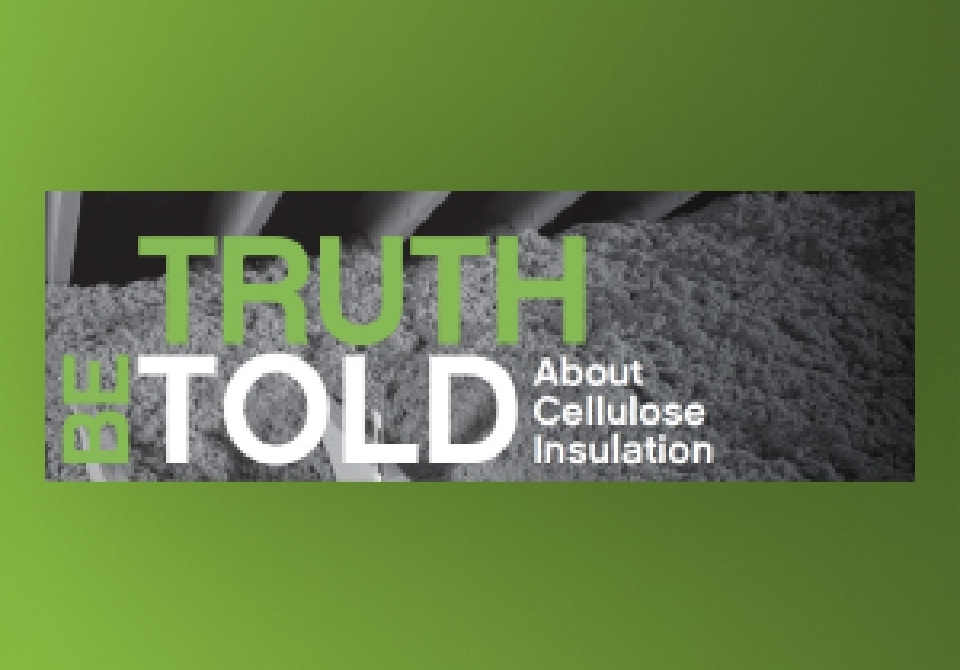
Debunking 6 Common Myths About Cellulose Insulation
Installing cellulose insulation is among the most efficient ways to save energy while enhancing the comfort of a home and reducing its carbon footprint. The natural fibers of cellulose are engineered to prevent carbon emissions, providing no shortage of benefits — from easy installation and equalized temperatures to superior noise suppression and fire protection.
Understanding cellulose’s specific properties and advantages can help you make the right insulation choice. Some of the most well-known benefits include:
- Energy efficiency
- Reducing carbon footprint
- Sound control
- Fire resistance
- Lower heating and cooling costs
Unfortunately, every market has its myths, and the insulation industry is no exception. To help set the record straight, we rounded up six of the most common misconceptions about cellulose insulation, debunked them and shared a little insight into how Greenfiber can help you in your next building project.
1. Does cellulose insulation settle in attics or sidewalls?
THE TRUTH: Cellulose insulation does not settle in sidewalls, if properly installed, but it will settle in attics until it reaches a stable density — as will other types of blown insulation.
Greenfiber has tested its products for settling and determined the percentage of settling that will occur in loose applications, such as attics. Our coverage charts have taken this settling into account. Per the federal standard, all thermal performance testing is performed at the settled thickness.
For wall applications, when installed per Greenfiber’s installation instructions, the product is guaranteed to never sag or settle for the life of the structure. In addition, our technical field representatives provide on-site training to installers and regularly perform field audits to verify our installers have the expertise to properly install to our specifications.
2. Is cellulose insulation flammable?
THE TRUTH: Cellulose insulation contains active fire-resistance materials that provides a Class 1 flame spread rating and is a building code approved fire-blocking product.
Greenfiber’s insulation is treated with a maximum of 15% fire-retardant chemicals that are proven to provide durable and excellent resistance in the event of a fire regardless of geographic location.
The Consumer Product Safety Commision has regulated the cellulose insulation industry for over 30 years to provide confidence that the product testing mandates required by all cellulose manufacturers offers consumer protection against fires. Greenfiber exceeds all safety requirements mandated by the CPSC and every bag carries a full Underwriters Laboratories label validating that compliance.
Get a quote from a Greenfiber Trusted Installer near you
3. Can mold grow on cellulose insulation?
THE TRUTH: Mold rarely grows on cellulose insulation without underlying excessive water intrusion or damage.
Weathertight construction greatly reduces the opportunities for weather-related ruin, such as water or wind damage or the potential for mold growth. Unlike other types of insulation, Greenfiber’s cellulose insulation takes on, diffuses and dissipates moisture to provide moisture management. Greenfiber insulation is tested by UL per industry standards (ASTM C739) for an acceptable moisture absorption rate and ASTM C1338 for fungal (mold) resistance. These are supported by the UL label on the bags.
Sufficient drying trying for wall-sprayed Greenfiber insulation depends on relative humidity. However, drying is typically accomplished in 24 hours if application instructions are followed.
4. Does cellulose insulation contain asbestos?
THE TRUTH: No.
Greenfiber, a type of loose-fill insulation, is manufactured without unhealthy substances such as formaldehyde or asbestos. It is not made with textile, fiberglass, mineral wool or other fibers. Greenfiber insulation complies with the California Department of Public Health CDPH/EHLB standards for low VOC and formaldehyde emissions (Berkeley Analytical certificate ##130104-02). It contains a minimum 85% recycled content.
5. Is cellulose insulation a poor choice for older homes?
THE TRUTH: Cellulose is great for insulating old homes, from attics and walls to floors and ceilings.
One of the best things about cellulose insulation is its versatility. Our loose-fill cellulose insulation is not limited to new construction. In fact, it’s ideally suited to provide additional R-value over existing attic insulation, as it completely fills voids and gaps left open by other forms of insulation. By adding SANCTUARY® by Greenfiber — the industry’s first all-in-one cellulose insulation that can be spray-applied or dense-packed into walls, ceilings and floors — even the most time-worn homes will stay warmer in the winter and cooler in the summer.
Need to see it to believe it? See how a residential development company in Hyattsville, Maryland, used cellulose insulation for their latest remodeling project.
Did we debunk a myth that surprised you? Use our outreach form to discuss your insulation goals.
6. Is cellulose insulation unsafe to touch?
THE TRUTH: No.
Cellulose insulation often has the stereotype of being itchy when in contact with a person's skin; however, because of the material used, cellulose is soft to the touch and doesn't contain materials that irritate unprotected skin.
It is typically recommended to wear long sleeves when installing insulation, such as fiberglass, that can release small fibers into the air that cause skin irritation. Protective clothing can help reduce this risk, but choosing an insulation material that doesn’t contain any glass fibers can provide ultimate peace of mind.
Cellulose is not only a safe and reliable product but also a critical component to delivering better-performing homes. These six myths can make choosing an insulation material for your project a challenging task, but our team of customer service representatives are happy to explain the facts and guide you through any part of the installation process.
Ready to use cellulose insulation in your next project? Find a Trusted Installer near you today.
- Category: Installation
